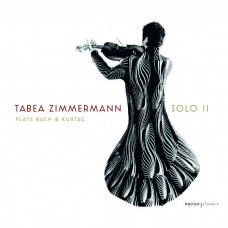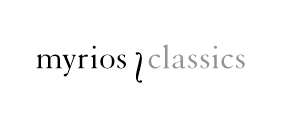|
塔碧亞.齊瑪曼 中提琴獨奏專輯第二集 (巴哈:第3.4號大提琴無伴奏組曲改編集/庫泰格:(標誌,遊戲和信息)選曲)
塔碧亞.齊瑪曼 中提琴
"無論使用任何一種樂器, 我們需要巴哈的音樂" - 塔碧亞.齊瑪曼
在出版了廣受好評, 含有巴哈前兩首無伴奏大提琴組曲的(獨奏專輯第一集 MYR003)的十年之後, 中提琴家塔碧亞.齊瑪曼現在出版了第三,四號組曲. 她將這些組曲與庫泰格的" 標誌,遊戲和信息"配對, 並選擇其中的六首來向巴哈致敬.
巴哈是用甚麼樂器寫下他的無伴奏組曲BWV1007~10012? 聽起來看起來會是甚麼樣子的? 這些問題到現在仍然引起許多猜測. 作曲家約翰.彼得.凱爾納(Johann Peter Kellner)的1700年早期巴哈手稿副本是六首無伴奏組曲的兩個主要來源之一, 其中標示一個中提琴低音. 當時的大提琴的大小, 製造和演奏技巧尚未標準化. 巴哈也許心中想的樂器是五弦大提琴(violoncello piccolo)或是五弦高音大提琴(viola da spalla). 後者是一隻中提琴用一條肩帶掛在身體前面: 巴哈公開的用五弦高音大提琴表演 – 也許就是演奏這些組曲. 塔碧亞.齊瑪曼在這張錄音專輯中沒有改變她使用的樂器, 在此她用1980年的Vatelot中提琴和一隻古典式琴弓演奏.
在2009年, (獨奏專輯第一集, MYR003)開啟了塔碧亞.齊瑪曼與myrios classics廠牌的合作關係. 該專輯榮獲許多國際獎項: 留聲機雜誌編輯推薦, 德國Fono論壇雜誌"本月之星 Stern des Monats", 法國Telerama雜誌4f和義大利Musica雜誌五顆星評價, 除此之外, 因為這張開創性的錄音專輯, 評審們在令人羨慕的德國ECHO Klassik音樂大獎中選擇塔碧亞.齊瑪曼為"2010年度最佳樂器演奏家".
"We need Bach's music, regardless of the instrument" – Tabea Zimmermann
Ten years after her acclaimed album "Solo" with the first two cello suites of Johann Sebastian Bach, violist Tabea Zimmermann now sets her sights on Suites Nos. 3 and 4. She pairs them with excerpts from Gyorgy Kurtág's cycle "Games, Signs & Messages", selecting six numbers to form her own personal homage to Bach.
For what kind of instruments did Bach write his solo suites BWV 1007-1012? How did they sound, what did they look like? This subject still gives rise to much speculation. Johann Peter Kellner's manuscript copy from the early 1700s is one of the two main sources for the six solo suites, and it indicates a viola basso. The violoncello had not yet become standardized in terms of size, construction, and playing technique; Bach probably had instruments in mind such as the violoncello piccolo or the viola da spalla. The latter was a viola attached in front of the body by a strap: Bach performed the viola da spalla in public himself – possibly these suites. Tabea Zimmermann has not switched her musical hardware for this recording: here she plays her 1980 Vatelot viola with a classical bow.
In 2009, the album "Solo" (MYR003) launched Tabea Zimmermann's collaboration with the myrios classics label. The release was crowned with a multitude of international awards: Gramophone Editor's Choice, "Stern des Monats" in Fono Forum, 4f in Telerama and 5 Stars in the Italian magazine Musica; moreover, in response to that groundbreaking recording, the jury of the coveted German ECHO Klassik Prize selected Tabea Zimmermann as "2010 Instrumentalist of the Year".
1. J.S. Bach: Suite No. 3 in C major for violoncello solo, BWV 1009 (played on viola) -
1. Prelude
2. Allemande
3. Courante
4. Sarabande
5. Bourree I – Bourree II – Bourree I
6. Gigue
7. G. Kurtág: "Signs, Games and Messages" for viola - Panaszos nota (Klagendes Lied)
8. Kromatikus feleselos (Zank-Kromatisch)
9. Doloroso – Garzulyeknak
10. Nepdalfele (Im Volkston)
11. ... eine Blume für Tabea ...
12. In Nomine – all'ongherese (Damjanich emlekko)
13. J.S. Bach: Suite No. 4 in E-flat major for violoncello solo, BWV 1010 (played on viola) -
1. Prelude
2. Allemande
3. Courante
4. Sarabande
5. Bourree I – Bourree II – Bourree I
6. Gigue
|
|



